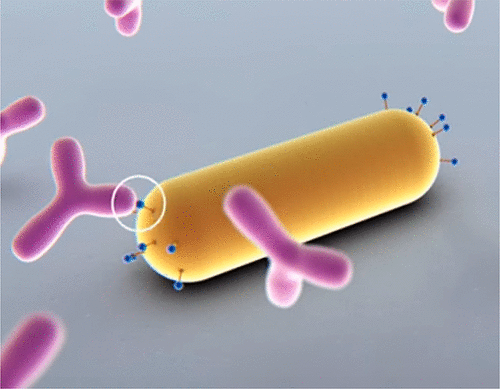Our official English website, www.x-mol.net, welcomes your feedback! (Note: you will need to create a separate account there.)
Single-Molecule Plasmon Sensing: Current Status and Future Prospects
ACS Sensors ( IF 8.9 ) Pub Date : 2017-08-08 00:00:00 , DOI: 10.1021/acssensors.7b00382 Adam B. Taylor 1 , Peter Zijlstra 1
ACS Sensors ( IF 8.9 ) Pub Date : 2017-08-08 00:00:00 , DOI: 10.1021/acssensors.7b00382 Adam B. Taylor 1 , Peter Zijlstra 1
Affiliation

|
Single-molecule detection has long relied on fluorescent labeling with high quantum-yield fluorophores. Plasmon-enhanced detection circumvents the need for labeling by allowing direct optical detection of weakly emitting and completely nonfluorescent species. This review focuses on recent advances in single molecule detection using plasmonic metal nanostructures as a sensing platform, particularly using a single particle–single molecule approach. In the past decade two mechanisms for plasmon-enhanced single-molecule detection have been demonstrated: (1) by plasmonically enhancing the emission of weakly fluorescent biomolecules, or (2) by monitoring shifts of the plasmon resonance induced by single-molecule interactions. We begin with a motivation regarding the importance of single molecule detection, and advantages plasmonic detection offers. We describe both detection mechanisms and discuss challenges and potential solutions. We finalize by highlighting the exciting possibilities in analytical chemistry and medical diagnostics.
中文翻译:

单分子等离子传感:现状与未来展望
单分子检测长期以来一直依赖于具有高量子产率荧光团的荧光标记。等离子体增强检测通过直接光学检测弱发射和完全无荧光的物质,从而避免了标记的需要。这篇综述着重介绍了使用等离激元金属纳米结构作为传感平台的单分子检测的最新进展,特别是使用单粒子-单分子方法。在过去的十年中,已经证明了用于等离子体激元增强的单分子检测的两种机制:(1)通过等离子体增强弱荧光生物分子的发射,或(2)通过监测由单分子相互作用诱导的等离子体激元共振的移动。我们从激发关于单分子检测的重要性以及等离激元检测提供的优势的动机开始。我们描述了两种检测机制,并讨论了挑战和潜在的解决方案。我们通过强调分析化学和医学诊断中令人兴奋的可能性来最后确定。
更新日期:2017-08-08
中文翻译:

单分子等离子传感:现状与未来展望
单分子检测长期以来一直依赖于具有高量子产率荧光团的荧光标记。等离子体增强检测通过直接光学检测弱发射和完全无荧光的物质,从而避免了标记的需要。这篇综述着重介绍了使用等离激元金属纳米结构作为传感平台的单分子检测的最新进展,特别是使用单粒子-单分子方法。在过去的十年中,已经证明了用于等离子体激元增强的单分子检测的两种机制:(1)通过等离子体增强弱荧光生物分子的发射,或(2)通过监测由单分子相互作用诱导的等离子体激元共振的移动。我们从激发关于单分子检测的重要性以及等离激元检测提供的优势的动机开始。我们描述了两种检测机制,并讨论了挑战和潜在的解决方案。我们通过强调分析化学和医学诊断中令人兴奋的可能性来最后确定。


























 京公网安备 11010802027423号
京公网安备 11010802027423号